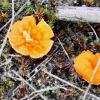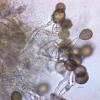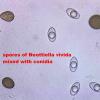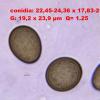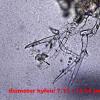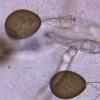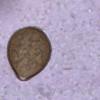
16-01-2026 00:45
Ethan CrensonHi all, On decorticated hardwood from a New York

08-12-2025 17:37
 Lothar Krieglsteiner
Lothar Krieglsteiner
20.6.25, on branch of Abies infected and thickened

10-01-2026 20:00
Tom SchrierHi all,We found picnidia on Protoparmeliopsis mur

13-01-2026 07:28
 Danny Newman
Danny Newman
Chlorociboria glauca on indet. decorticate logThe

15-01-2026 15:55
 Lothar Krieglsteiner
Lothar Krieglsteiner
this one is especially interesting for me because

13-01-2026 08:43
 Danny Newman
Danny Newman
Tricladium varicosporioides on indet. decorticate

07-01-2026 22:22
 Danny Newman
Danny Newman
Tatraea sp. on indet. hardwood The Swag, Great Sm

13-01-2026 09:10
 Danny Newman
Danny Newman
Dasyscyphella chrysotexta on indet. decorticate ha
An anamorph on the hymenium of Neottiella vivida
François Bartholomeeusen,
26-11-2019 18:41
On October 15, 2019, I found several fruiting bodies on a heathland, which I determined on October 16, after microscopic examination, as Neottiella vivida. Two days later I repeated the examination in the hope that the spore ornamentation had improved. Instead, I found an anamorph. At first I thought of contamination but because of the presence of conidiophores this was ruled out. The, in first instance bright orange hymenium, was two days later covered with a black, powdery layer caused by the brown conidia.
Does anyone have experience with this anamorphic?
Thank you very much in advance,
François Bartholomeeusen
David Malloch,
27-11-2019 03:45

Re : An anamorph on the hymenium of Neottiella vivida
This looks like Harzia acremonioides (syn. Acremoniella atra). I have not seen this species, but I have cultured H. verrucosa, a very similar species with verrucose conidia. Harzia verrucosa is a mycoparasite producing typical contact cells on susceptible fungal hosts, so maybe your specimen was parasitic on Neottiella vivida.
François Bartholomeeusen,
27-11-2019 17:45
Re : An anamorph on the hymenium of Neottiella vivida
Dear David,
Thank you very much, I could never have solved this problem on my own. For me this is one less UFO (Unidentified Fungal Object)!
Kind regards,
François

